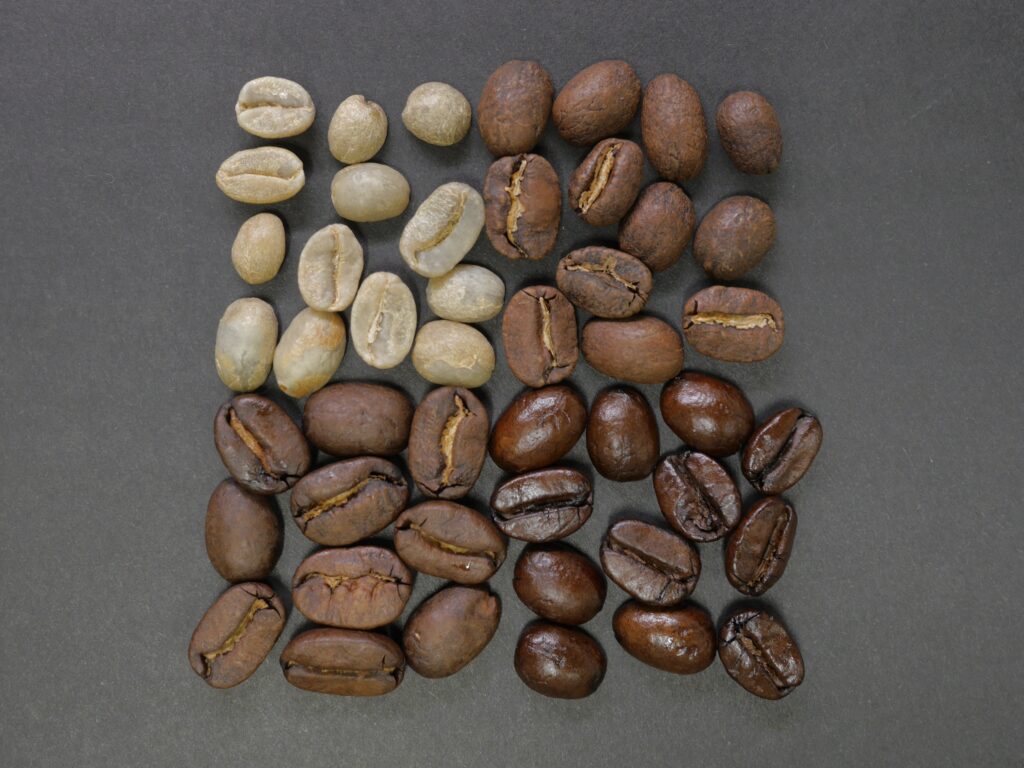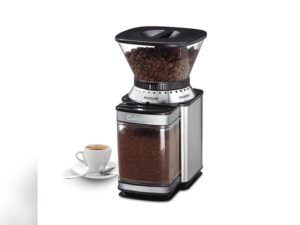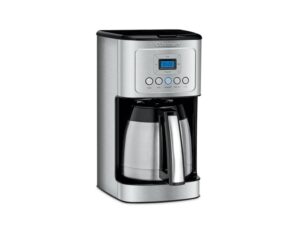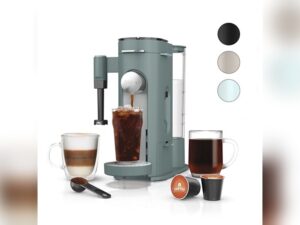Have you ever wondered what makes a cup of coffee truly stand out? It’s not just about waking up or getting that caffeine boost — a good coffee has specific qualities that can transform your entire experience.
When you take that first sip, you want a rich aroma, a balanced flavor, and a smooth finish that leaves you wanting more. But how can you recognize these characteristics? You’ll discover the key traits that define a good coffee, helping you pick the perfect brew every time.
Keep reading, and unlock the secrets to enjoying coffee like a true connoisseur.

Credit: www.cafedirect.co.uk
Aroma And Scent
Aroma and scent play a vital role in defining a good coffee. The smell of freshly brewed coffee offers the first impression before tasting. It reveals the coffee’s quality, origin, and roasting style. A rich and inviting aroma signals a delightful cup ahead. This sensory experience connects drinkers to the coffee’s unique story. Understanding common aroma profiles helps in appreciating each coffee’s character.
Origin And Roast Notes
Different coffee origins produce distinct aromas. Beans from Africa often have bright, fruity smells. South American coffees may carry nutty or sweet scents. The roast level also shapes aroma. Light roasts tend to keep floral and fruity notes. Dark roasts bring smoky and bold scents. Together, origin and roast create a complex bouquet. This aroma profile hints at the flavors in your cup.
Fruity And Floral Scents
Many good coffees give off fruity or floral aromas. Citrus, berry, or stone fruit scents are common. These aromas add brightness and freshness. Floral notes, like jasmine or rose, offer a delicate touch. Such scents often come from lightly roasted beans. They signal a lively and vibrant coffee. Fruity and floral aromas enhance the drinking experience.
Nutty And Chocolatey Hints
Nutty and chocolatey aromas are popular in many coffees. Almond, hazelnut, or walnut scents create warmth. Chocolate notes range from milk to dark chocolate. These aromas usually appear in medium to dark roasts. They add richness and smoothness to the coffee. Nutty and chocolatey hints bring comfort and depth to each sip.
Flavor Balance
Flavor balance is a key trait of a good coffee. It means no single taste overwhelms the others. Instead, sweetness, acidity, and bitterness work together smoothly. This balance makes coffee enjoyable and easy to drink. It also highlights the unique character of the beans.
Good flavor balance creates a pleasant experience sip after sip. It shows the skill of the roaster and the quality of the coffee beans. Now, let’s explore the main elements that contribute to this balance.
Sweetness Levels
Sweetness in coffee comes from natural sugars in the beans. A good coffee has a gentle sweetness that feels smooth and soft. It can remind you of honey, caramel, or fruit. This sweetness balances the sharpness and bitterness. Too little sweetness makes coffee taste flat. Too much can make it seem syrupy or artificial.
Acidity And Brightness
Acidity gives coffee a lively, fresh taste. It adds brightness and can bring out fruity or citrus notes. Good acidity is clean and crisp, not sour or harsh. It helps coffee feel light and vibrant. Low acidity makes coffee taste dull or heavy. Balanced acidity is important to keep the flavor interesting.
Bitterness Control
Bitterness is natural in coffee but must be controlled. Good coffee has a mild bitterness that adds depth without being overpowering. It often hints at chocolate or nuts. Too much bitterness can ruin the taste and cause bitterness to linger unpleasantly. Proper roasting and brewing reduce excess bitterness. This control creates a smooth and satisfying finish.
Body And Texture
The body and texture of coffee define the physical experience of drinking it. These traits shape how the coffee feels on your tongue and how it coats your mouth. A good coffee has a balanced body that matches its flavor profile. The texture should enhance enjoyment without overwhelming the senses. Understanding these details helps you appreciate every sip.
Viscosity And Mouthfeel
Viscosity refers to how thick or thin the coffee feels. A medium to full viscosity gives a satisfying weight in the mouth. The coffee should feel smooth, not watery or too heavy. Mouthfeel is the overall sensation of texture, such as creaminess or silkiness. Good coffee delivers a pleasant mouthfeel that invites you to take another sip.
Richness Without Oiliness
Richness means the coffee has depth and complexity in its texture. It should feel full and rounded but never oily or greasy. Oiliness can leave an unpleasant film on the palate. A quality coffee balances richness with cleanliness, keeping the texture enjoyable and fresh. This balance highlights the coffee’s natural flavors.
Clean And Smooth Finish
The finish is the aftertaste left once you swallow the coffee. A clean finish means no lingering bitterness or harshness. Smoothness ensures the end of each sip feels gentle and refined. Good coffee leaves a fresh, pleasant sensation without any rough edges. This encourages savoring the moment and appreciating the brew.

Credit: hotcoffeemedia.com
Aftertaste And Complexity
Aftertaste and complexity are key signs of a good coffee. They show how rich and interesting the coffee is beyond the first sip. A coffee with a pleasant aftertaste makes you want to take another sip. Complexity adds depth, making the experience enjoyable and unique.
Lingering Flavors
A good coffee leaves flavors that stay in your mouth. These flavors do not disappear quickly. They can be sweet, fruity, or slightly nutty. Lingering flavors give a lasting impression of the coffee’s quality. They make the drinking experience more satisfying and memorable.
Nuanced Taste Layers
Complex coffee has many taste layers that unfold slowly. You may notice hints of chocolate, berries, or spices. Each sip reveals a new flavor or note. These layers create a rich and engaging taste profile. They show the skill in roasting and the coffee’s origin.
Balanced Depth
Balanced depth means no flavor is too strong or weak. Bitterness, acidity, and sweetness work together in harmony. This balance makes the coffee smooth and enjoyable. It prevents any harsh or overpowering taste. Balanced coffee feels full and round on the palate.
Freshness And Quality
Freshness and quality define the true essence of good coffee. Fresh coffee delivers vibrant flavors and rich aromas. Quality ensures every sip is smooth and enjoyable. These two factors work together to create a satisfying coffee experience.
Freshly Brewed Indicators
Freshly brewed coffee shows clear signs of freshness. It has a strong, inviting aroma that fills the air. The taste is lively with bright, distinct notes. The crema on top of espresso should be thick and golden. Fresh coffee does not taste flat or stale.
Consistent Roast Standards
Quality coffee depends on a consistent roast. Roasting affects flavor, acidity, and body. Each batch should have the same color and texture. Avoid beans that look burnt or unevenly roasted. Proper roasting brings out the best in coffee beans.
Proper Bean Sourcing
Good coffee starts with carefully sourced beans. Farmers choose beans based on altitude and climate. Specialty coffee comes from specific regions known for quality. Beans must be picked at peak ripeness and handled with care. Proper sourcing guarantees fresh and flavorful coffee.
Compatibility With Additives
Compatibility with additives is an important trait of good coffee. Some coffees blend well with cream and sugar, while others lose their unique flavors. The right coffee balances its natural taste with added ingredients. This section explores how good coffee handles common additives.
Handling Cream And Sugar
A good coffee stays flavorful when you add cream or sugar. It does not become weak or watery. The coffee’s body should remain rich and smooth. Cream should enhance the texture, not mask the taste. Sugar should bring out sweetness without hiding the coffee’s natural notes.
Enhancement By Spices
Spices like cinnamon, nutmeg, or cardamom can add warmth to coffee. A quality coffee complements these spices well. The spices should highlight the coffee’s natural aroma and flavor. The blend should feel balanced, not overwhelming. Good coffee allows spices to create a cozy, inviting cup.
Maintaining Flavor Integrity
Good coffee keeps its core flavors intact despite additives. It does not taste bitter or dull after mixing. The coffee’s unique characteristics shine through each sip. This quality shows the coffee’s strength and balance. Maintaining flavor integrity means a better experience with every cup.
Visual And Brewing Qualities
Visual and brewing qualities play a key role in defining a good coffee. These qualities influence the first impression and the overall drinking experience. Clear visual cues reveal the coffee’s freshness and the skill in brewing. The way coffee looks and brews can tell a lot about its quality and flavor potential.
Color And Crema For Espresso
Good espresso has a rich, deep brown color. The crema on top should be thick and golden. Crema acts as a seal, preserving the coffee’s aroma and flavors. A thin or pale crema may indicate under-extraction or stale beans. Dark, oily crema often suggests over-roasted coffee or old grounds. The color and crema are quick signs of a well-made espresso.
Non-watery Appearance
A good coffee never looks watery or weak. It should have a full, vibrant color that matches its roast level. Light roasts appear lighter but still have a rich hue. Dark roasts show a deep brown or almost black color. Watery coffee lacks the oils and solids that carry flavor. This appearance shows poor extraction or low coffee quality.
Brewing Consistency
Consistency in brewing ensures a reliable taste every time. A good coffee maintains the same aroma, color, and flavor with each brew. Consistent brewing reflects quality beans and proper technique. It avoids bitterness, sourness, or flatness in the cup. Regularity in brewing builds trust and satisfaction for coffee lovers.

Credit: coffeeequipmentpros.com
Frequently Asked Questions
What Are The Qualities Of Good Coffee?
Good coffee has a rich aroma, balanced acidity, sweetness, and bitterness. It offers a smooth body with complex, pleasant flavors. It tastes fresh, not burnt or watery, and handles cream or sugar well without losing character.
What Is The Secret Ingredient To Add To Coffee?
The secret ingredient to add to coffee is a pinch of cinnamon, nutmeg, or cardamom. These spices enhance flavor and add warmth.
What Is The 80/20 Rule For Coffee?
The 80/20 rule for coffee means 80% of your brew is water, 20% is coffee grounds. This balance ensures optimal flavor extraction.
How To Identify Good Quality Coffee?
Good quality coffee has a rich aroma, balanced flavor, smooth body, and pleasant acidity. It tastes fresh, not bitter or burnt.
Conclusion
A good coffee offers a rich aroma that awakens the senses. It balances sweetness, acidity, and bitterness well. The flavor should feel smooth, never harsh or burnt. Quality coffee holds its taste even with milk or sugar added. Its body feels pleasant and satisfying on the palate.
Freshness and proper brewing bring out the best characteristics. Enjoying coffee means appreciating these simple yet important traits. Choose coffee that makes your daily cup enjoyable and comforting. Quality matters in every sip, so savor it fully.








